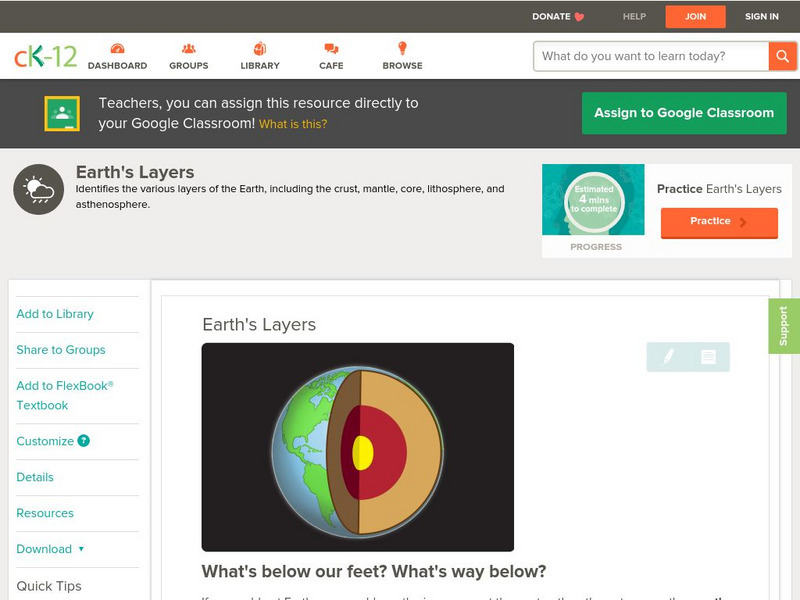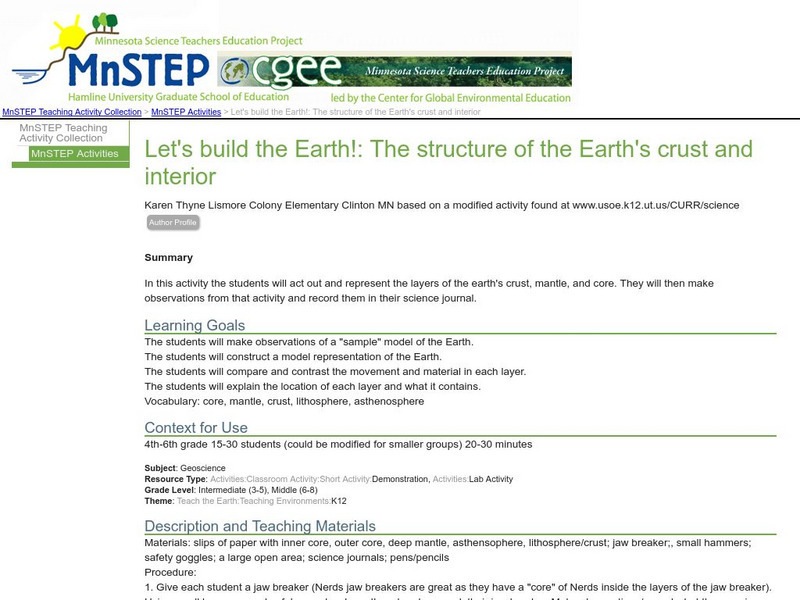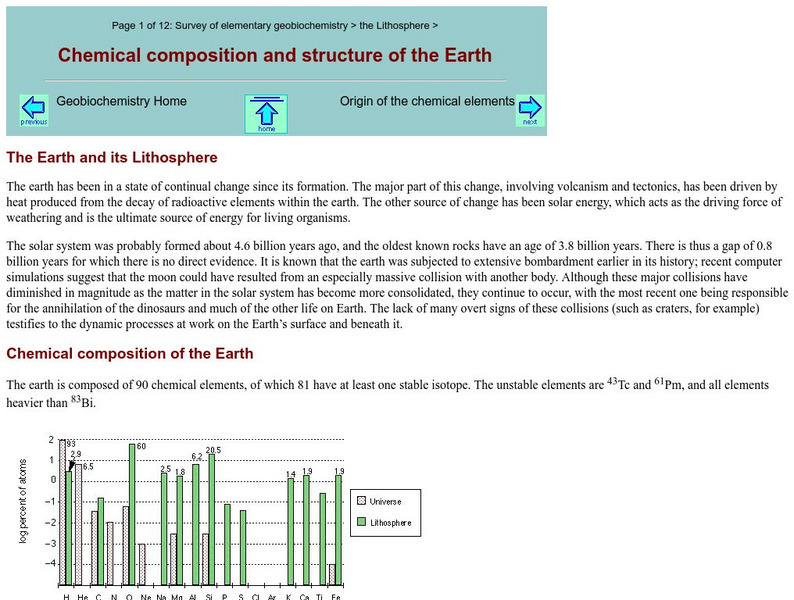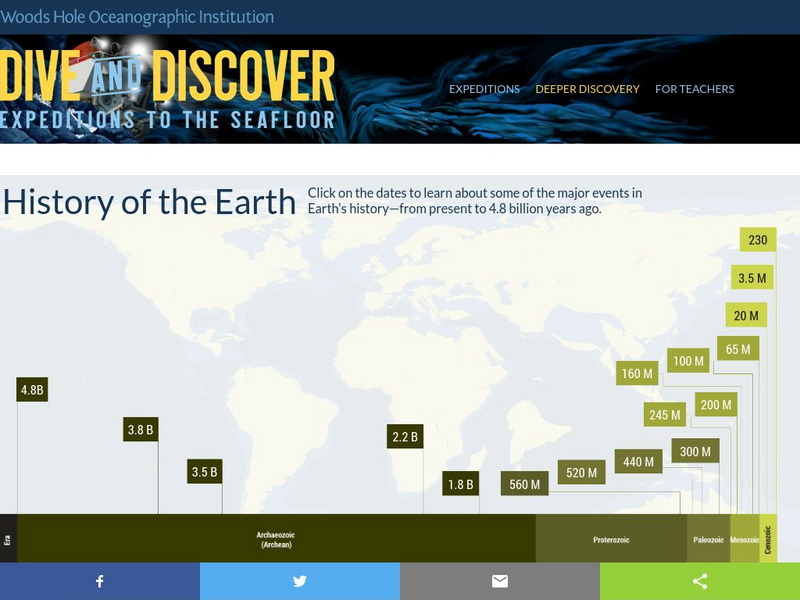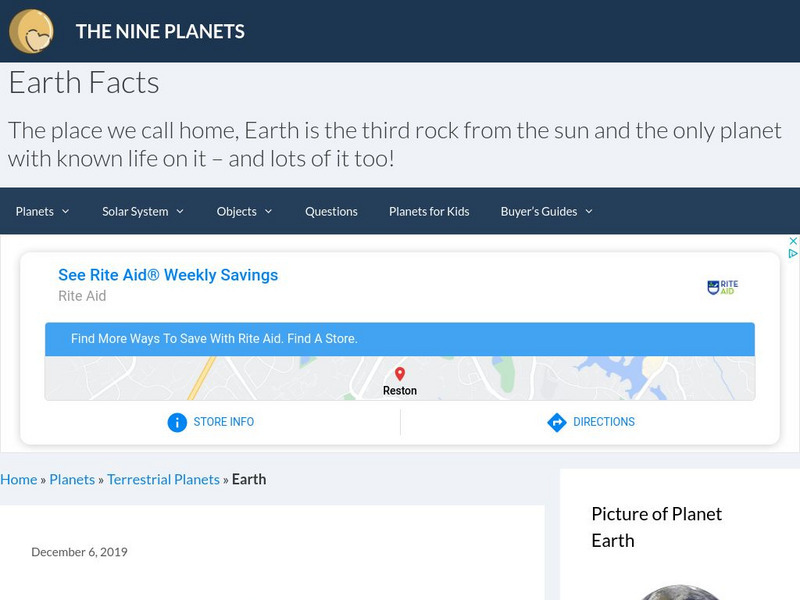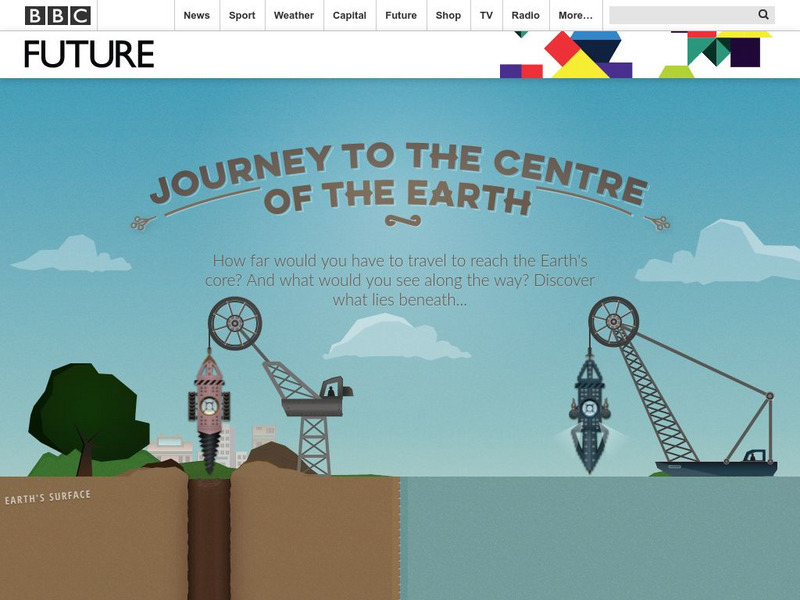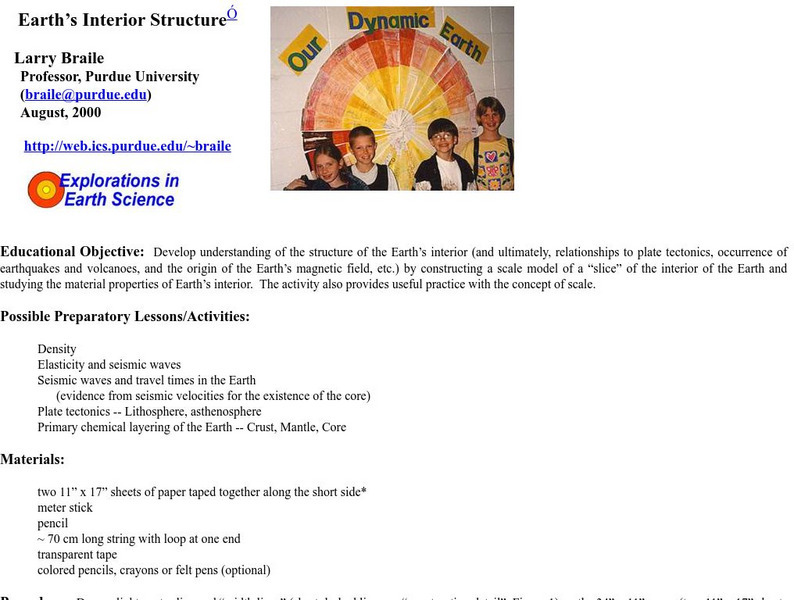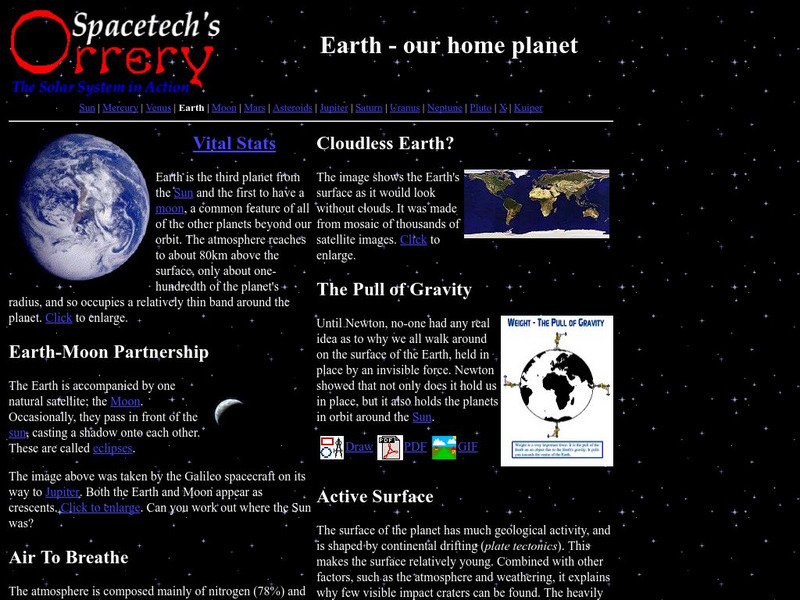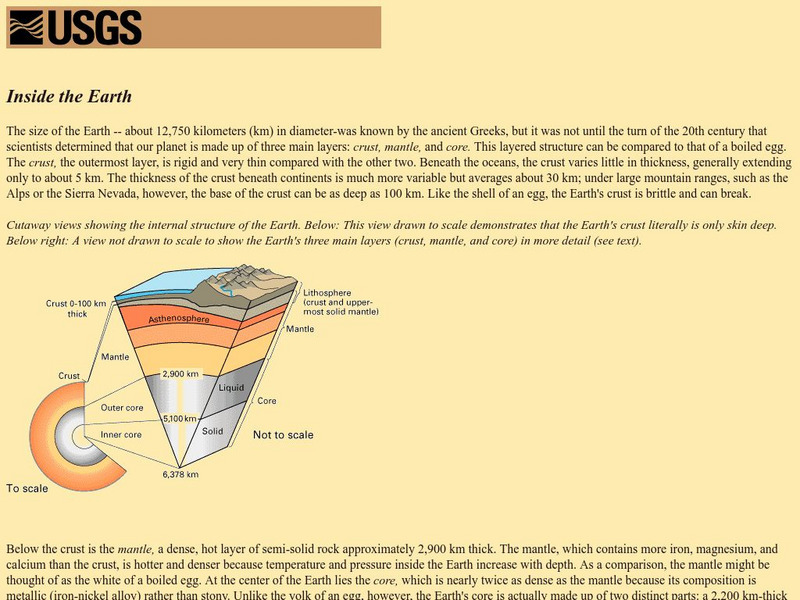Hi, what do you want to do?
Curated OER
Where to Live?
Students examine types of spatial data found in a GIS. In this geography lesson plan students use a GIS to facilitate analysis and decision making.
Curated OER
Changes Inside Planets
Students investigate the concept of planetary differentiation. They complete an experiment to simulate it using gelatin and food. The instructional activity includes vocabulary to increase reading comprehension skills as part of the...
CK-12 Foundation
Ck 12: Earth Science: Earth's Layers
[Free Registration/Login may be required to access all resource tools.] Identifies the various layers of the Earth, including the crust, mantle, core, lithosphere, and asthenosphere.
Columbia University
Columbia University: Evidence for Internal Earth Structure and Composition
This resource describes how seismic waves have helped us to understand the composition of the Earth's interior. It discusses seismic discontinuities, including the Mohorovicic Discontinuity or Moho, and what we have learned about the...
Science Education Resource Center at Carleton College
Serc: Let's Build the Earth!: The Structure of the Earth's Crust and Interior
In this activity, students will make observations then construct a "sample" model representation of the Earth's layers. They will compare and contrast the movement and material in each layer explaining the location and what it contains.
Oregon State University
Osu: Volcano World: Layers of the Earth
This is a website not only on the mantle but also about all the layers of the earth.
National Geographic
National Geographic: Encyclopedia: Mantle
An in-depth look at the structure and composition of Earth's mantle, with lots of visuals. Covers lithosphere, Mohorovicic discontinuity, asthenosphere, transition zone, lower mantle, the d double-prime region, mantle convection, mantle...
Oswego City School District
Regents Exam Prep Center: Earth's Interior
A basic overview of the earth's mantle, crust, inner core, and outer core. Also discusses how earthquake waves travel through the Earth.
US Geological Survey
Usgs: The Interior of the Earth
This site provides a detailed discussion of the Earth's interior. Facts about the crust, mantle, and core are given along with diagrams of each. Also presents a table that lists the thickness and types of rock found in each part of the...
Purdue University
Purdue University: 3 D Earth Structure Model
Take a journey to the center of the Earth and learn about the structure, material properties, and conditions inside our planet.
Simon Fraser University
Chem1 Virtual Textbook: Chemical Composition and Structure of the Earth
As part of the General Chemistry Virtual Textbook, this site examines a variety of topics related to the Earth. This page looks at the Earth and its lithosphere, the chemical composition of the Earth, the structure of the Earth, and more.
CK-12 Foundation
Ck 12: Earth Science: Earth's Interior Study Guide
This comprehensive study guide covers the main terms and concepts needed for an earth science unit on the earth's interior. Review questions are included at the bottom of the study guide.
American Museum of Natural History
American Museum of Natural History: O Logy: Stuff to Do: Edible Earth
Take a look at the layers that make up our Earth: inner core, outer core, mantle, and crust. Then have fun making a model of the Earth's interior that you can eat up.
Other
Moorland School: Earth Science Zone: The Structure of the Earth
Take a look at the Earth from the inside out. This site shows the different layers of the earth with an explanation of the rocks and materials in each layer. Includes a quiz on the structure of Earth.
Woods Hole Oceanographic Institution
Deeper Discovery: Earth's Anatomy
Interactive site provides information on each layer of the earth. Click on a layer to discover more about it.
NOAA
Noaa: Structure of the Earth [Pdf]
Create a model to help learn the layers and structures within the Earth. Identify characteristics of each layer of the Earth.
Science Struck
Science Struck: The Four Main Layers of the Earth
Gives short descriptions of the crust, mantle, outer core, and inner core.
Nine Planets
The Eight Planets: Earth
Excellent Eight Planets site that provides a vast amount of information about planet Earth. Very comprehensive and complete site.
BBC
Bbc Future: Journey to the Centre of the Earth
Explore deep underground and deep in the ocean to discover what lies beneath the surface. Don't stop until the final destination: the core of the Earth.
Purdue University
Purdue University: Earth's Interior Structure
Purdue University provides a great lesson plan for learning about the Earth's interior structure. Focuses on the crust, mantle and core. Also includes examples and great charts that students will enjoy looking at.
Other
Spacetech's Orrery: Earth Our Home Planet
This site provides a very interesting overview of our home planet, Earth. Content includes a focus on the atmosphere, the pull of gravity, and the active surface.
US Geological Survey
Usgs: Inside the Earth
This is a website to learn not only about the inner and outer core, but also about the crust and the mantle of the interior of the earth.
Curated OER
National Park Service: What on Earth Is Plate Tectonics?
An easy-to-understand explanation of what plate tectonics is. Contains information about the inner parts of the Earth, the difference between the three types of plates, and numerous maps and illustrations.
Other
Bscs: Content Background Earth's Changing Surface
This is written to support and further your content learning about the dynamic nature of Earth's surface. The goal is for you to develop a conceptual understanding of landforms so that you will be able to more effectively teach...







